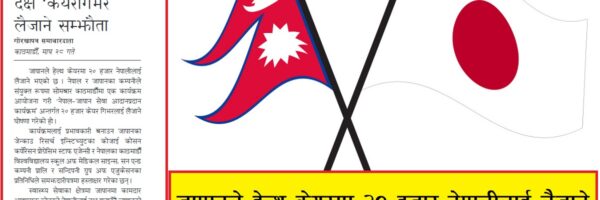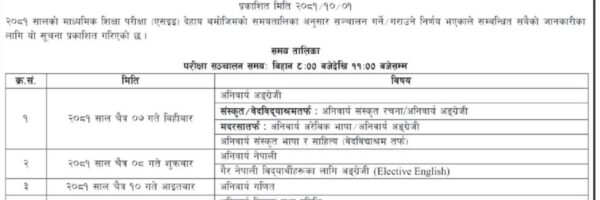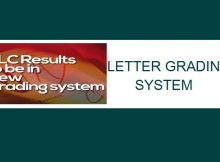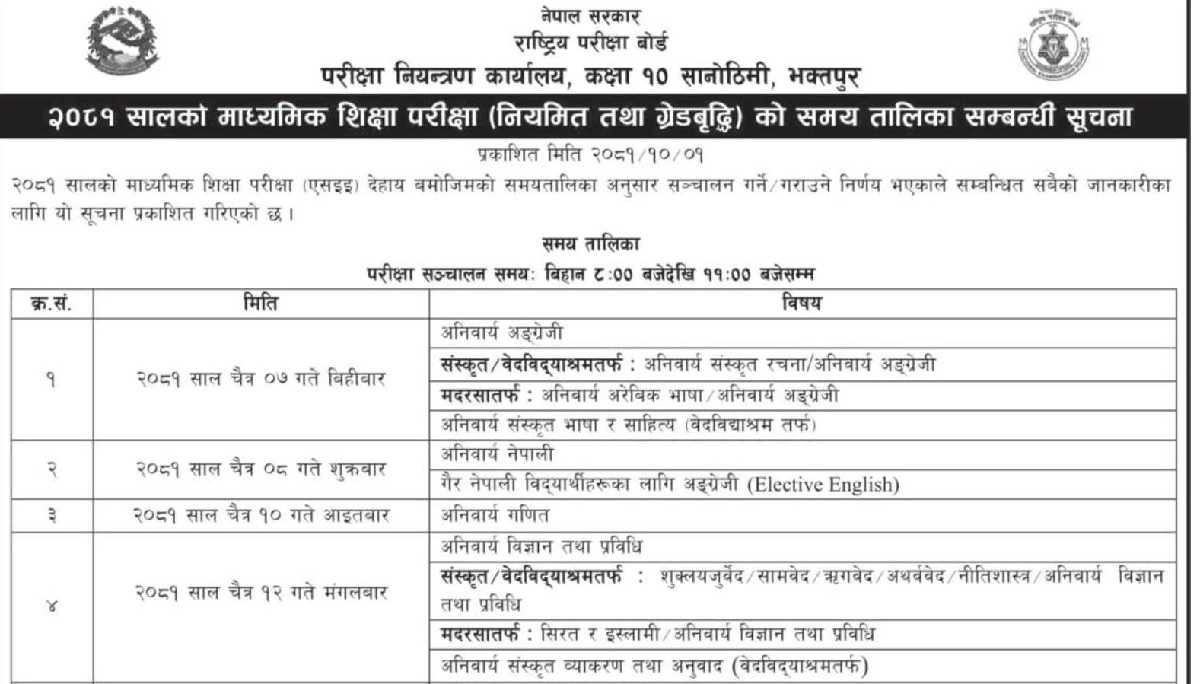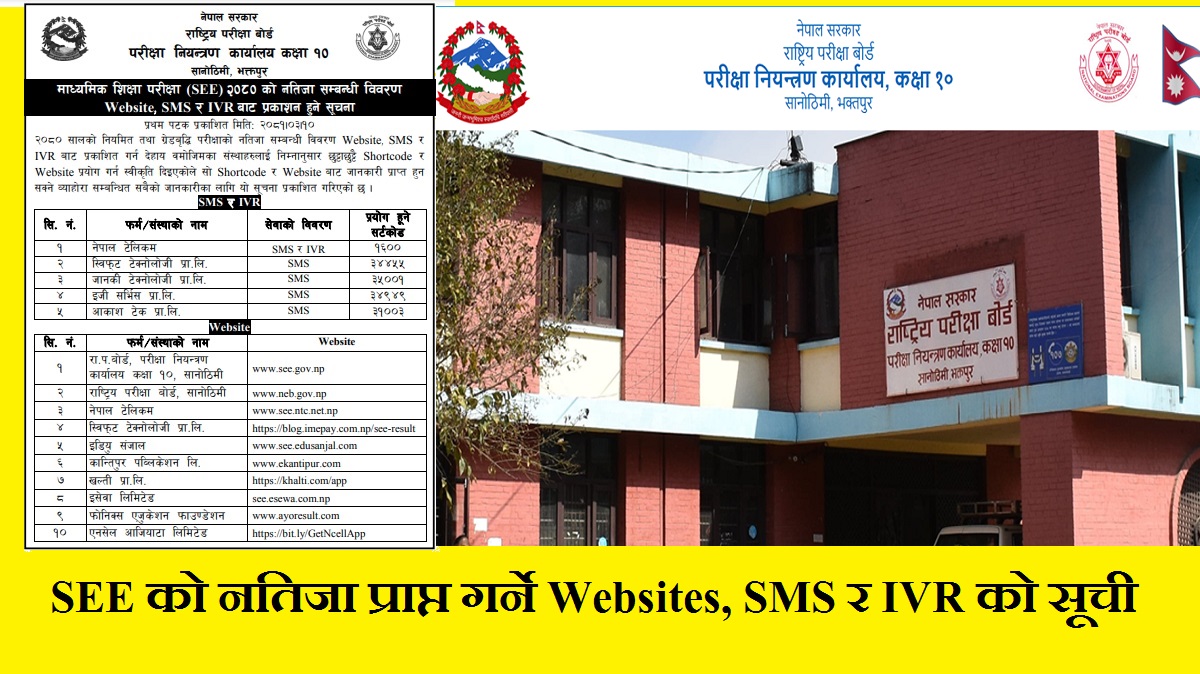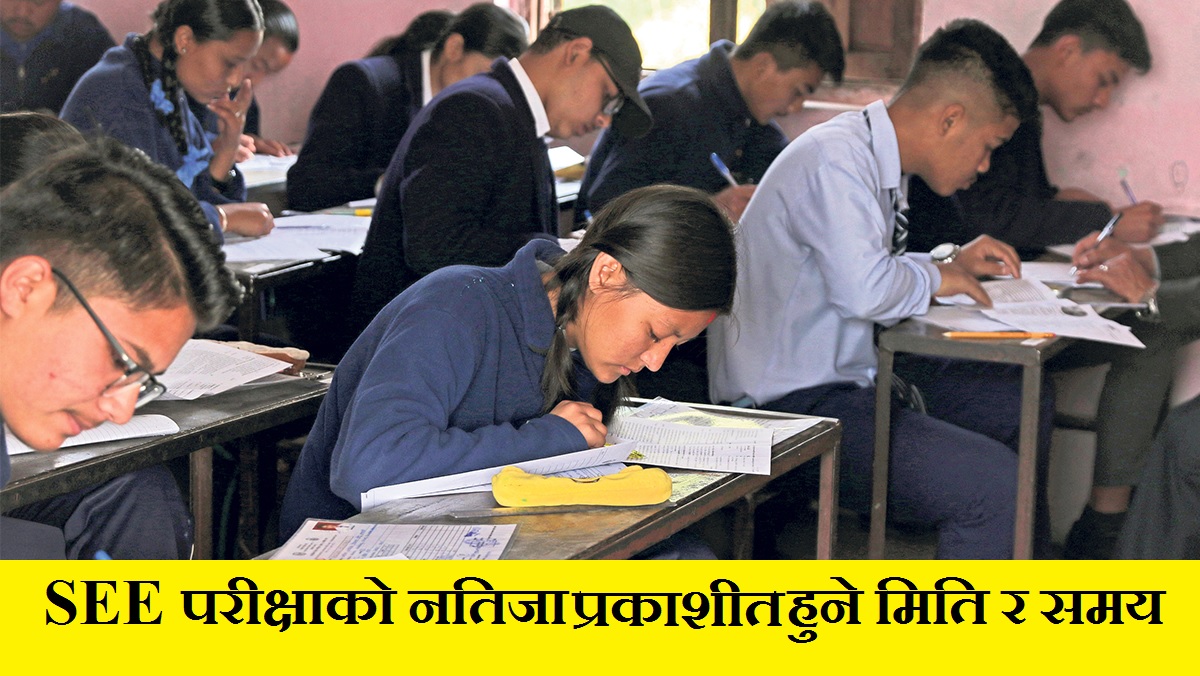SLC Grading system has introduced by the year 2072. The Office of the Controller of Examination has introduced the ‘letter grading’ system in the SLC examination. This has long been awaited, and a great deal of work has been done by the Secondary Education Development Project. Despite the delay, something is on the way to improving the SLC examination. There are several issues in the SLC examination that need to be explored and answered.
Issues in grading
Reporting of the raw score has been in practice in the SLC. A raw score is what the examiner provides after checking a student’s answer copy. If the full mark is 100, then there is a possibility of a score range of 0 to 100, i.e. a 101-point scale. The question is, if the student scores 0, does it mean he knows nothing? And if he scores 100, does it mean the student is prefect and does not need to know anything more? The answer to both these questions would be ‘No’.
It only means that in the test which was given to the student, the student was not able to give a correct answer to any of the questions. Or was fortunate to give the correct answer to all the questions. This could change if a different test paper was used for the same content or a different examiner were to check the same answer sheet. It is always true that in psychological measurement, such as an achievement, intelligent or personality test, there is some degree of error in the measurement, and a single score cannot be fixed.
Another difficulty in the 101-point scale is the difficulty in making a rationale interpretation in the difference among the scores. If a student scores 50 marks and another student 51 in Mathematics, it is difficult to indicate how a student scoring 51 is better than the student with 50 marks.
It is essential to be aware of the fallacy of the 101-point score, which has been in use in the SLC. It is not possible to measure the achievement of students like a scale measuring the weight or height of students.
There has been the use of a cut-off score of 32 per cent pass mark in theory and 40 per cent in the practical exam in the SLC. The question is, why is a student scoring 31 labeled incapable and a student with just 1 mark more able? There is also no rationale in thinking that 32 per cent predicts better future performance and a student below it will not excel. A cut-off score is just arbitrary, and there is no sound reason in its use. A cut-off score is conceptually incorrect.
In the SLC pass rate, the average score in the subjects and that of the highest scorer, for example, varies from year to year and from subject to subject. In 2059 B.S., the pass rate in the SLC was 32.05 per cent, and in 2060 B.S., it went up to 46.18 per cent. It jumped to 68.47 per cent in 2065 B.S. and plunged to 47.43 per cent in 2072 B.S.
If the SLC scores were reliable, it would mean that the nature of the SLC candidates changes from year to year – suddenly an able group emerges and the following year comes an inept group. This does not happen in nature – changes occur in a gradual manner, not in a random manner as in the SLC results. Year-wise difference is due to the exam or testing mechanism. In one year there is an easy test and a high pass percentage, and the following year, the test is difficult, and a low pass percentage. It is human error and not a natural phenomenon.
There is also the comparability issue among subjects. Suppose the highest score achieved in Mathematics is 100 and in the English language 85. If the raw score is used, it will assume a difference of 15 marks and conclude that the performance of the students is better in Mathematics compared to the English language. Whereas the truth is that the performance of students in both the subjects is the same – at the top.
A raw score cannot compare subject-wise performance. This problem tends to aggravate when marks in different subjects are summed up and a composite score is used. It is probable that marks obtained in one subject might influence the composite score more than another subject. For example, if marks in the English language vary from 30 to 60 and marks in Mathematics vary from 5 to 95, in the results, Mathematics will receive three time the weight of English. In effect, it will be an evaluation of the student’s performance in Mathematics rather than in the English language.
Addressing issues of grading
The above deliberations show the inappropriateness of the 101-point scale, existence of error in the measurement, arbitrariness of the cut-off score, and difficulty in comparing the scores from subject to subject and from year to year. With the introduction of letter grading, OCE is on the way to addressing some of these issues, and for some, more work needs to be undertaken.
OCE has started the letter grading system from this year in about 90 vocational stream schools and intends to expand this practice in the SLC next year. The SLC mark-sheet using letter grading has these features – a grade with an interval of raw scores included, grade point, grade point average and grade descriptors. These need to be made technically sound and ensure more standardized communication.
The use of the score interval for grades 90 to 100 A+, 80 to below 90 A, for example, indicates a departure from the 101-point scale and a consideration of the error of measurement. If the error of measurement is assumed to be of 5 points, then a score of 85 can be somewhere between 80 (85-5) and 90 (85+5). If the same test is taken again, a student with 85 marks in the first test will most probably get a score between 80 and 90 the second time. Therefore, it is safer to indicate it as grade A than assign 85 marks. Accompanying the grades is their descriptor, such as A+ Outstanding, A, or Excellent.
Grade descriptors describe what the students can do. This is typical achievement of each of the band of students, describing what each student with that grade is likely to have achieved. It is the reference point for awarding the grade. Though there are grade descriptors in the SLC mark-sheet in composite form, more informative and subject-wise grade descriptors should be developed. The grading system is the first attempt in SLC.
SLC Grading System
The present practice of grading system in the SLC does not take into account comparability, as a fixed interval score is used. As discussed above, a grade A in Mathematics is meant to mean the same as a grade A in the English language as a fixed band of score (80 to below 90) is translated as grade A for all the subjects without taking into consideration the varying nature of subjects and performances of students. The same issue arises while making yearly comparisons. ‘Judgmental grading system’ is better in addressing the comparability issue rather than the fixed boundaries used at present by the OCE.
In ‘judgmental grading’, a group of experts decide on the grade boundaries for each subject every year based on the performance of the sample students. Mark boundaries take care of subject-wise differences so that an A for Mathematics can be 80 to below 90, but for the English language, an A can be from 75 to below 85, making subject-wise comparison balanced. This boundary can be changed from year to year. Suppose the Mathematics test became difficult, then the boundary for Mathematics for that year can be set for A at 76 to below 86, making year-wise comparison balanced. Grading system is going to be used first time in SLC. This grading system has brought some confusion among the parents as well as students.
